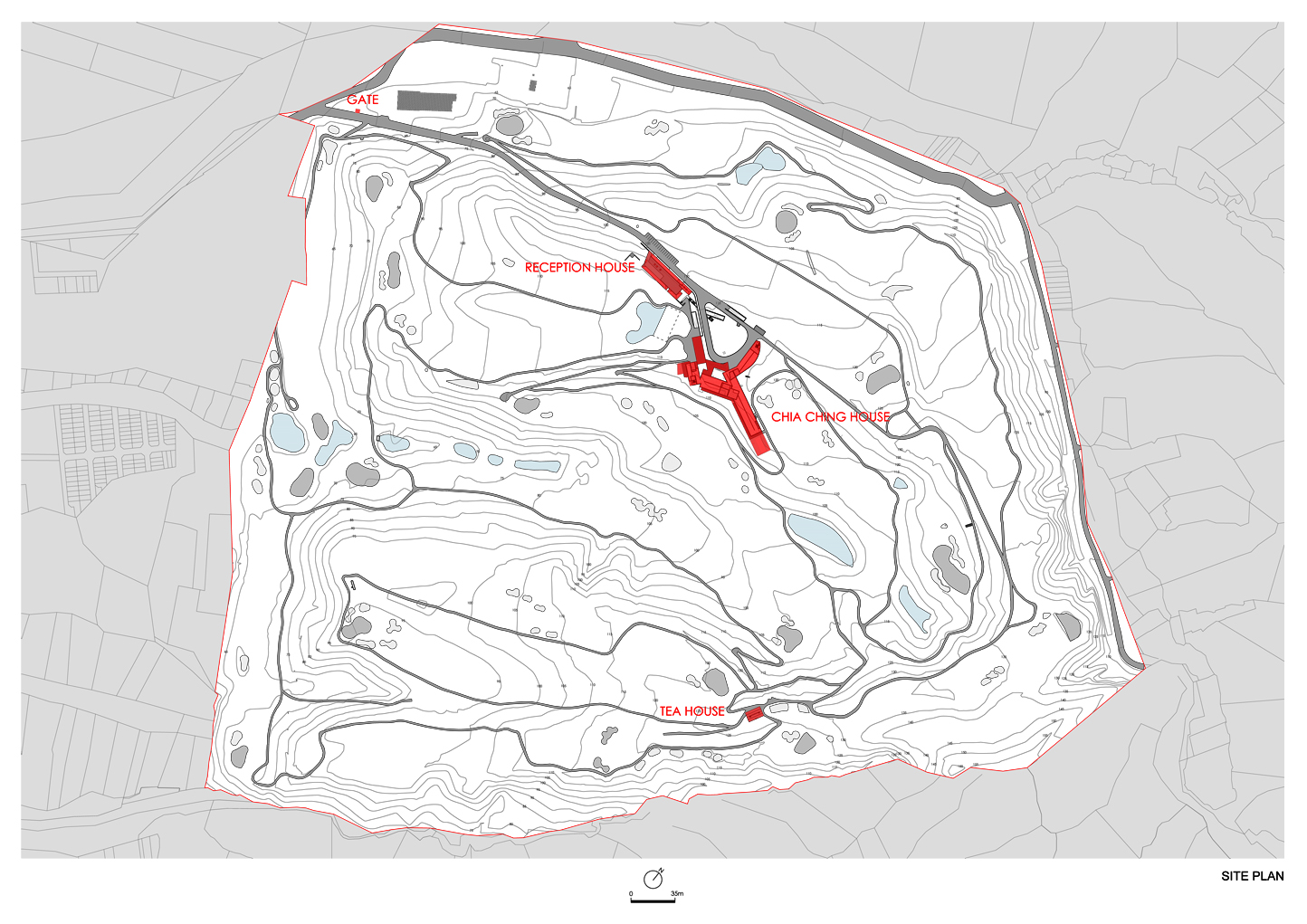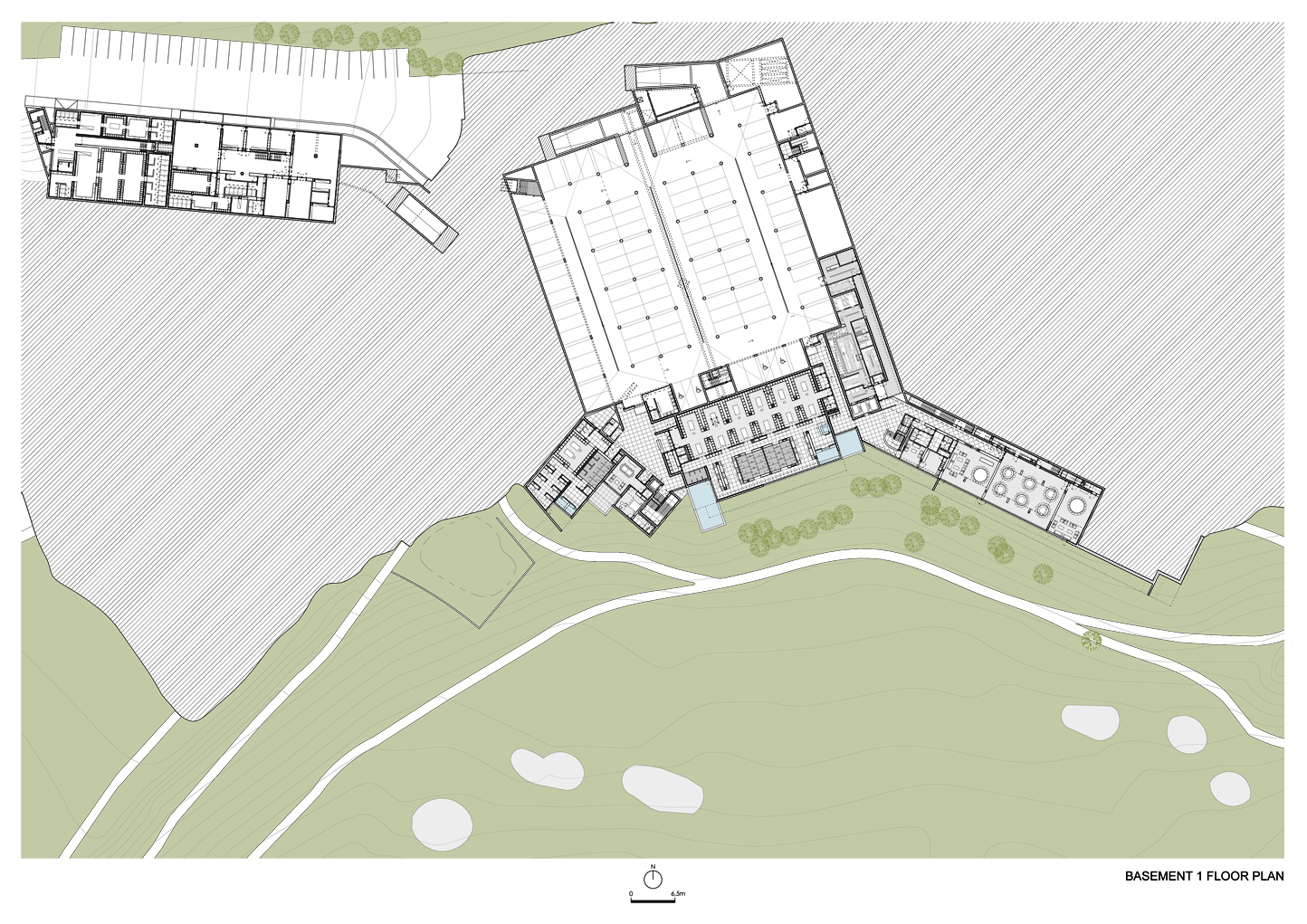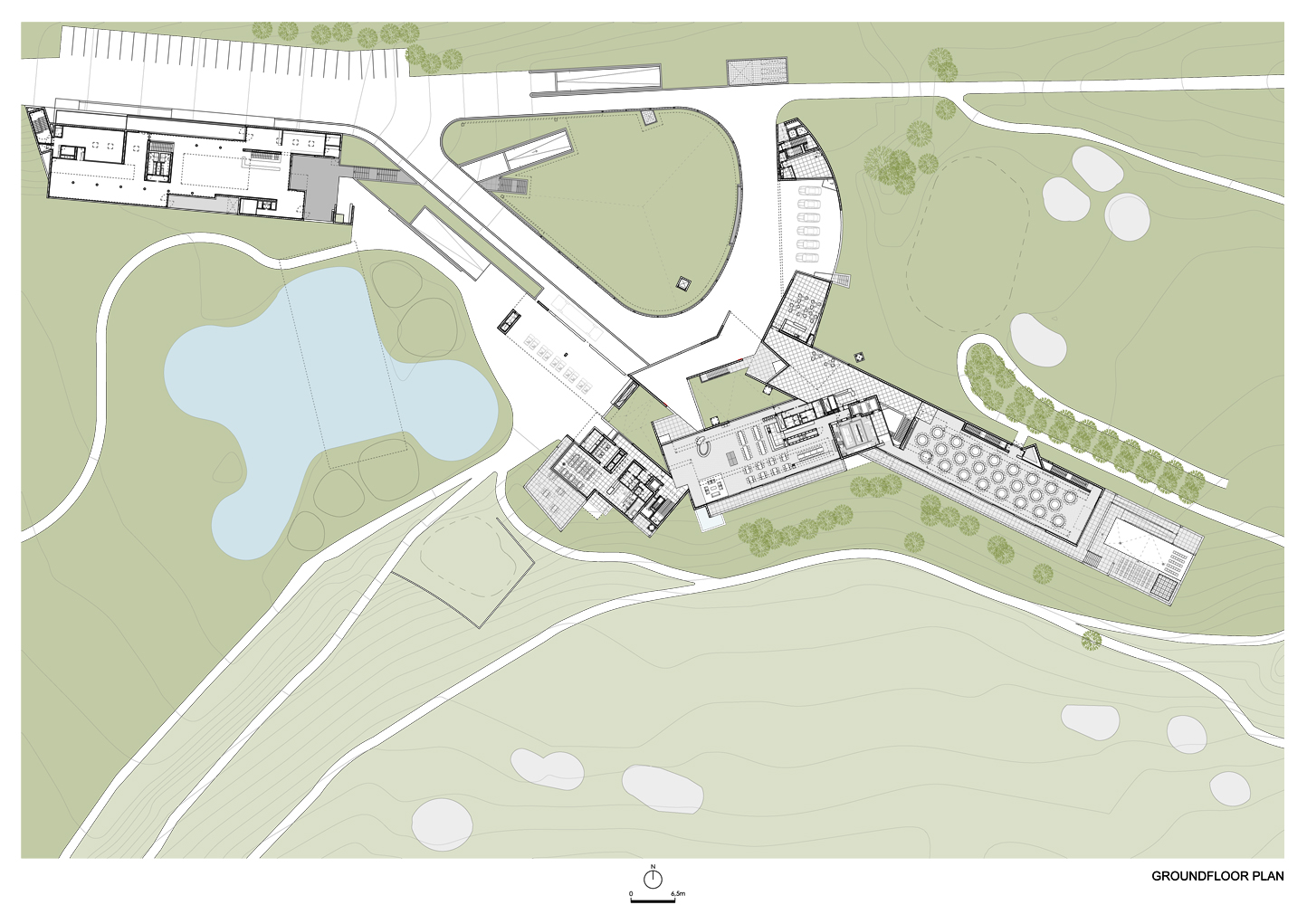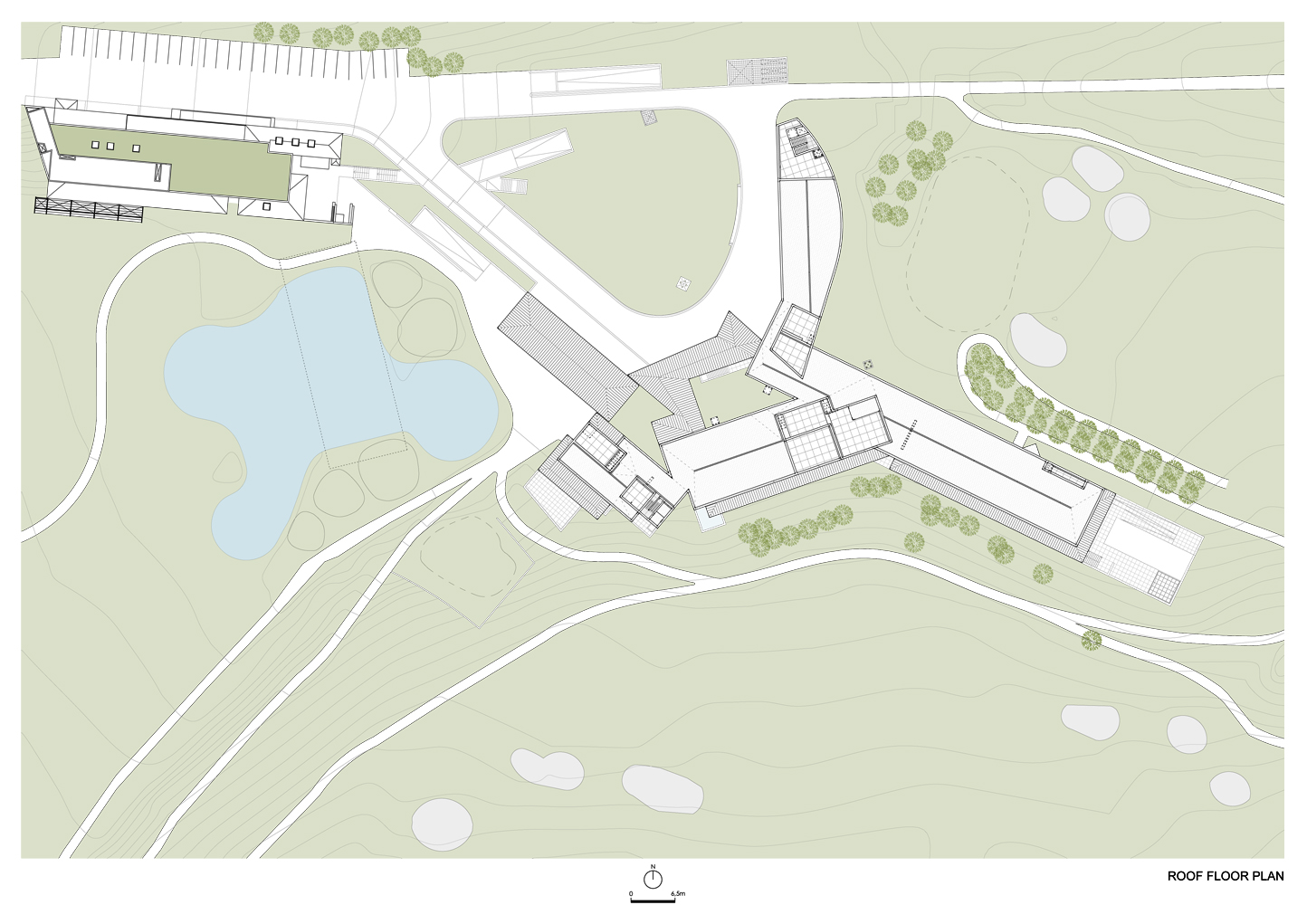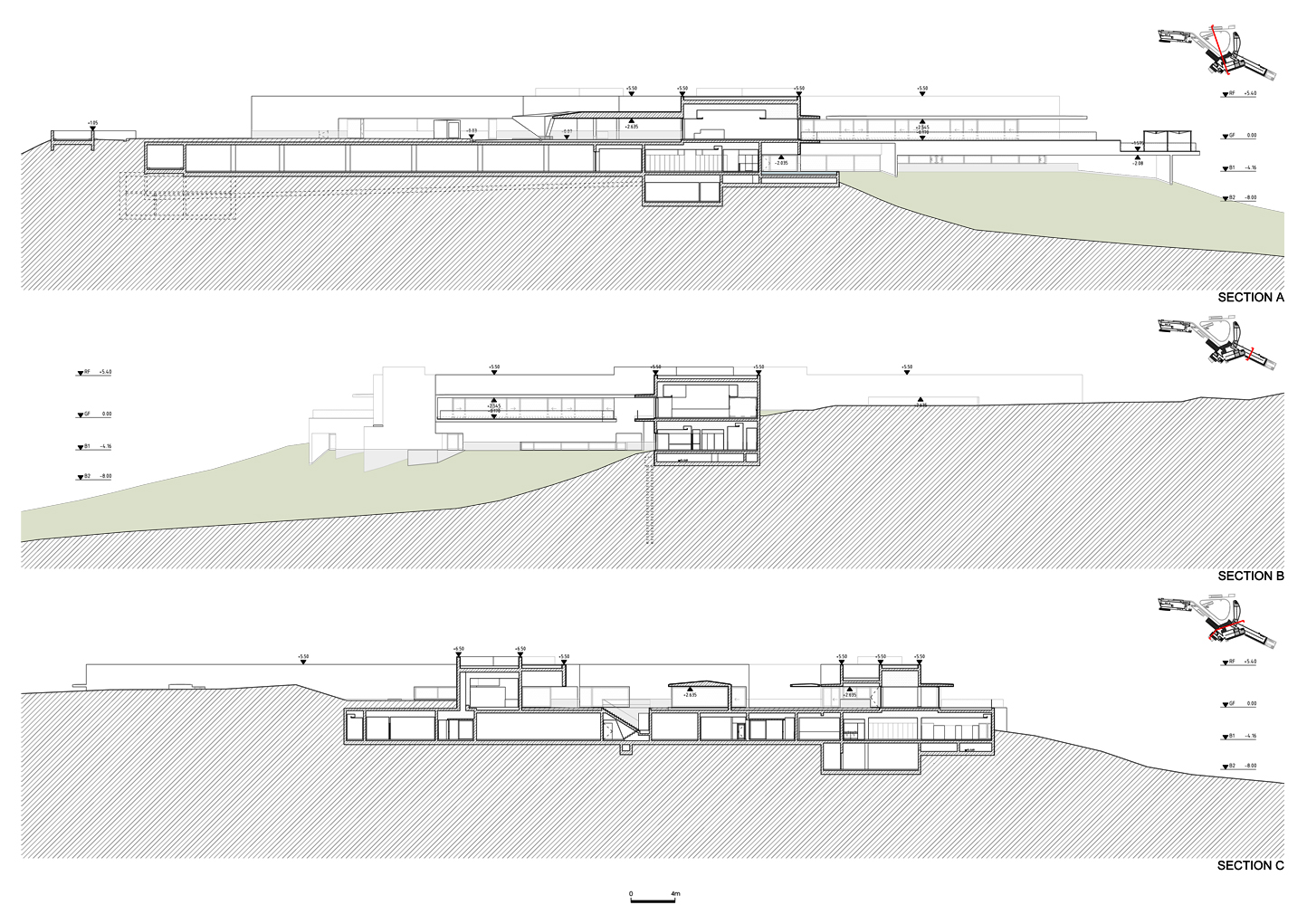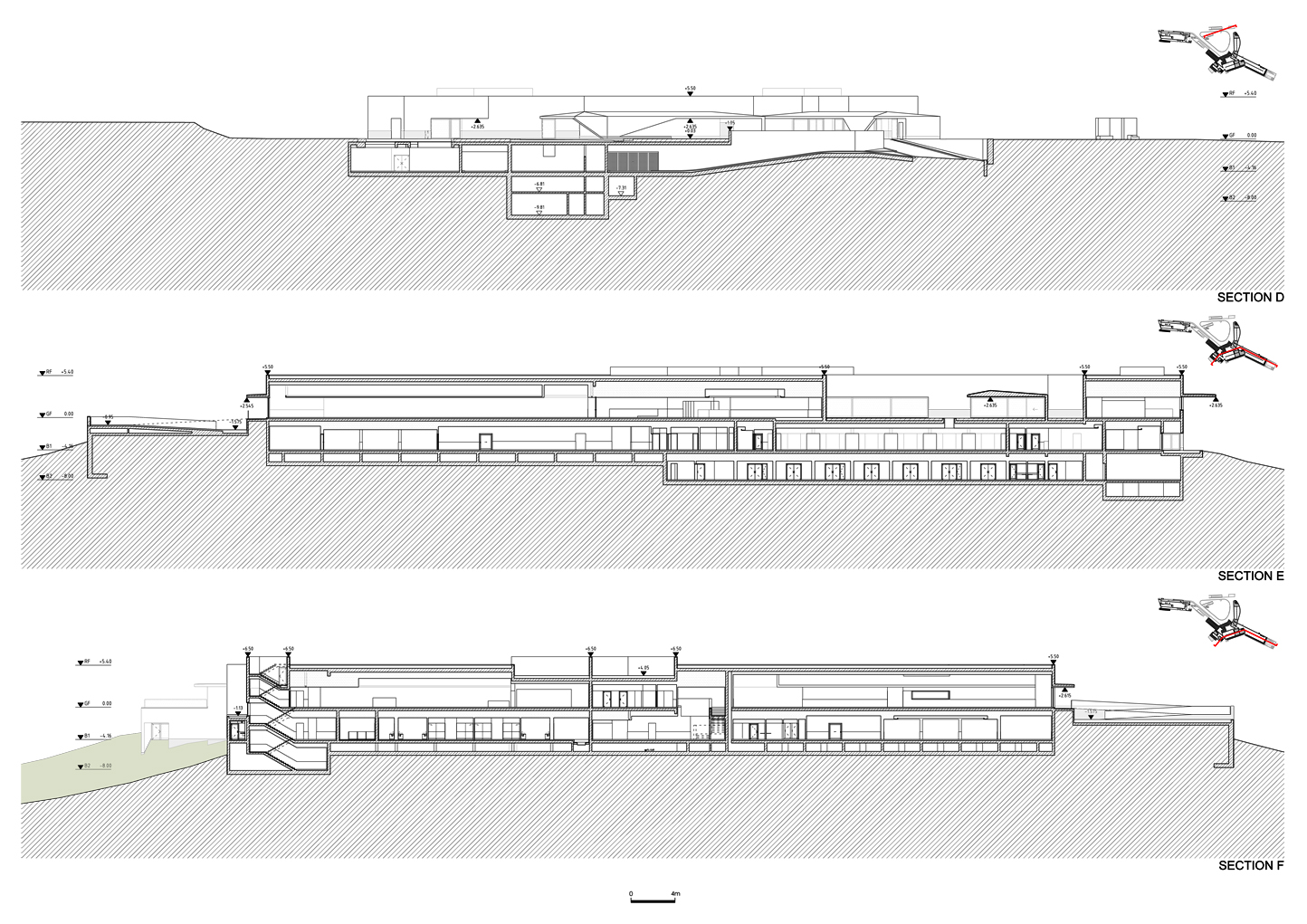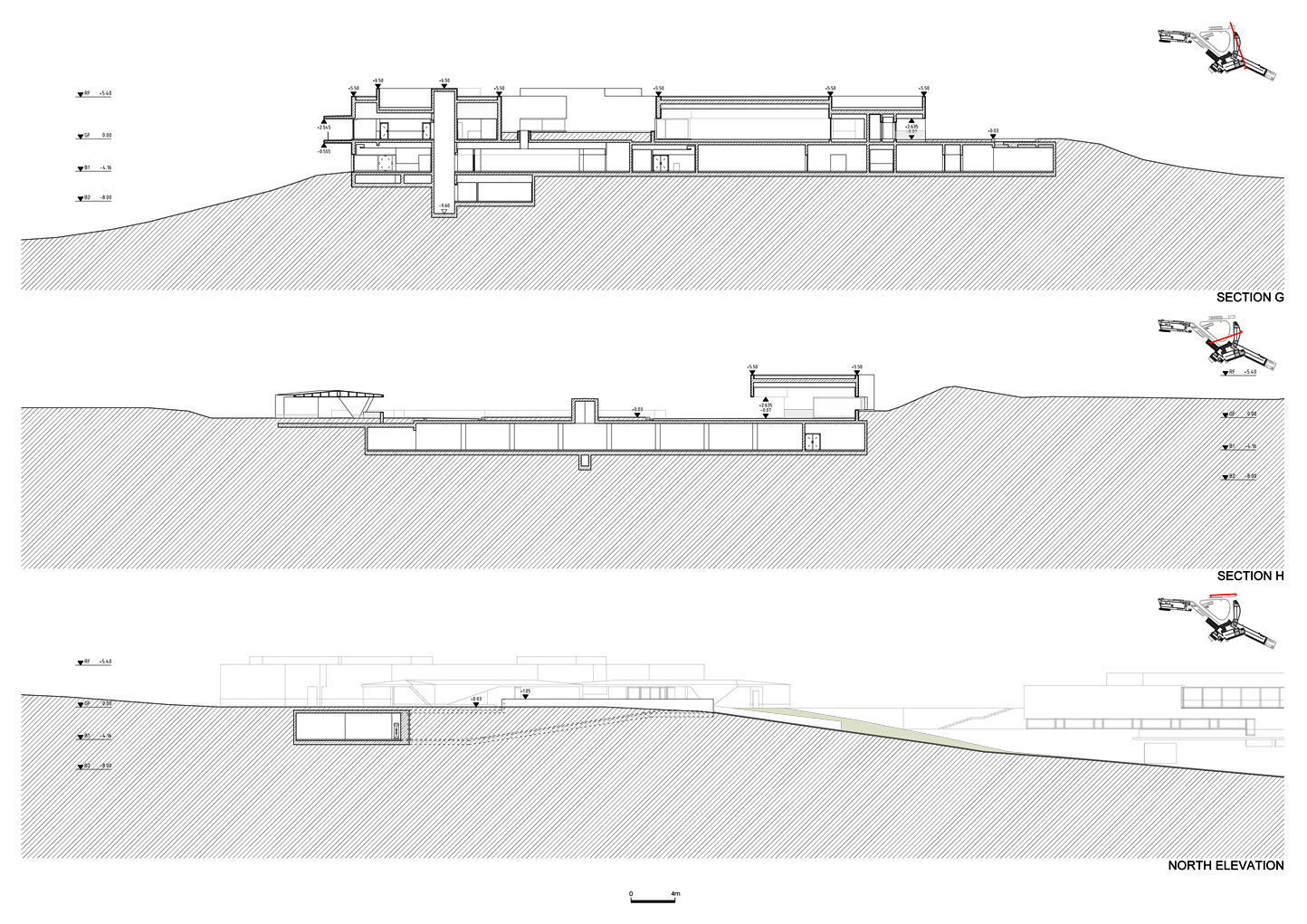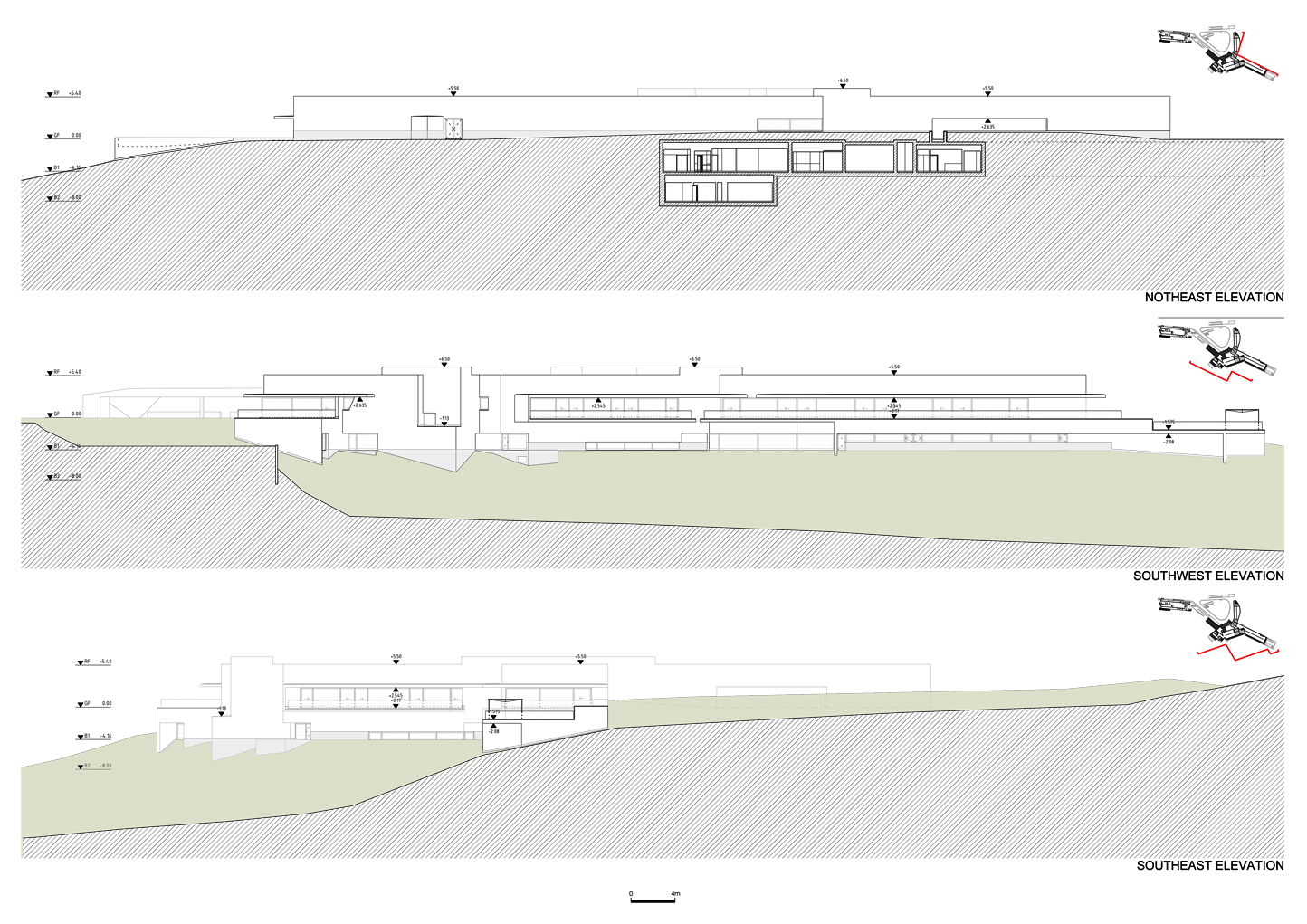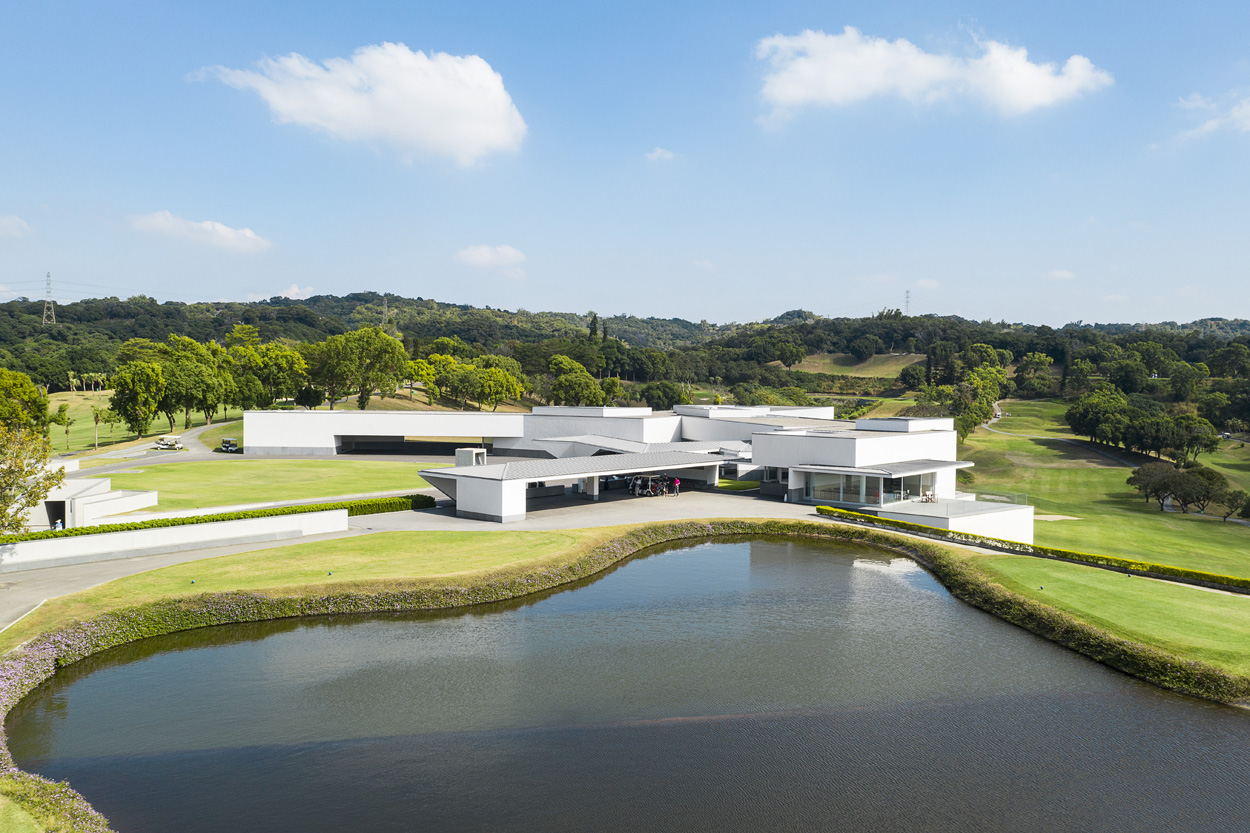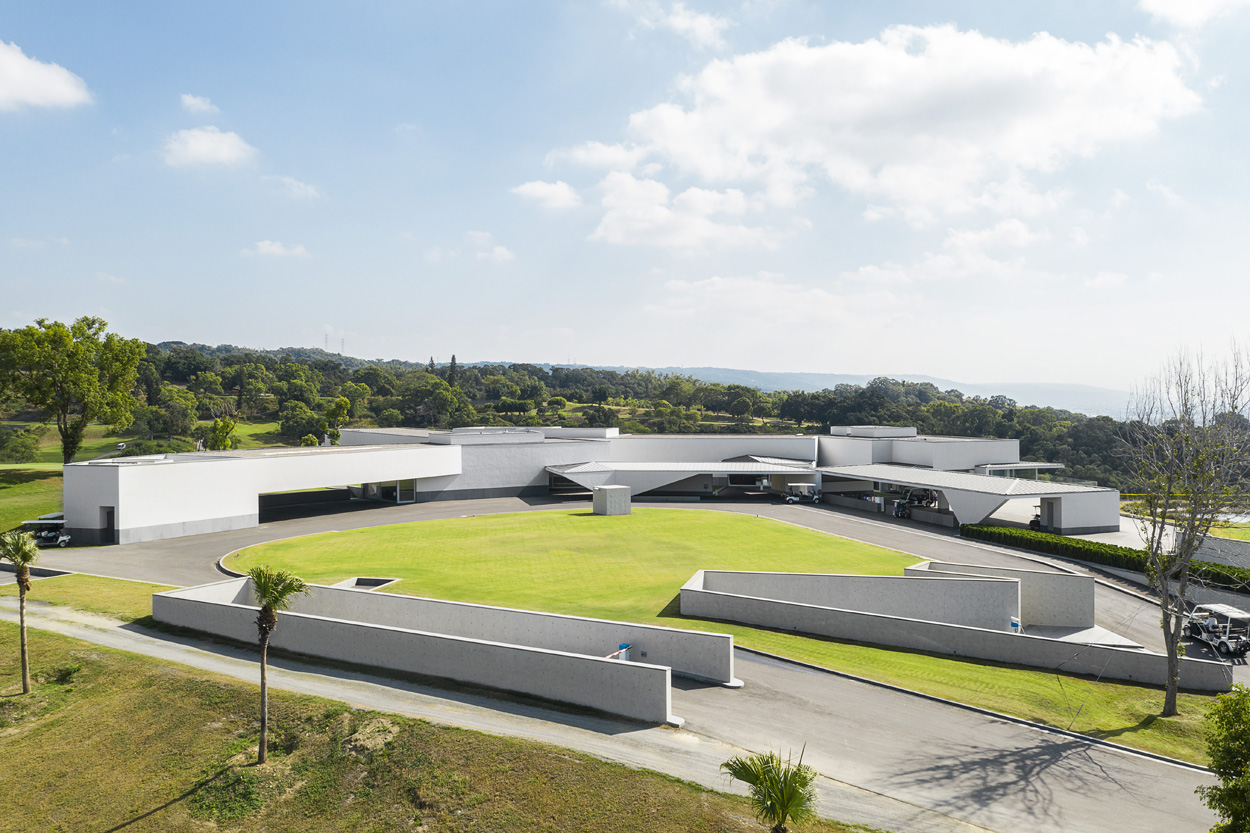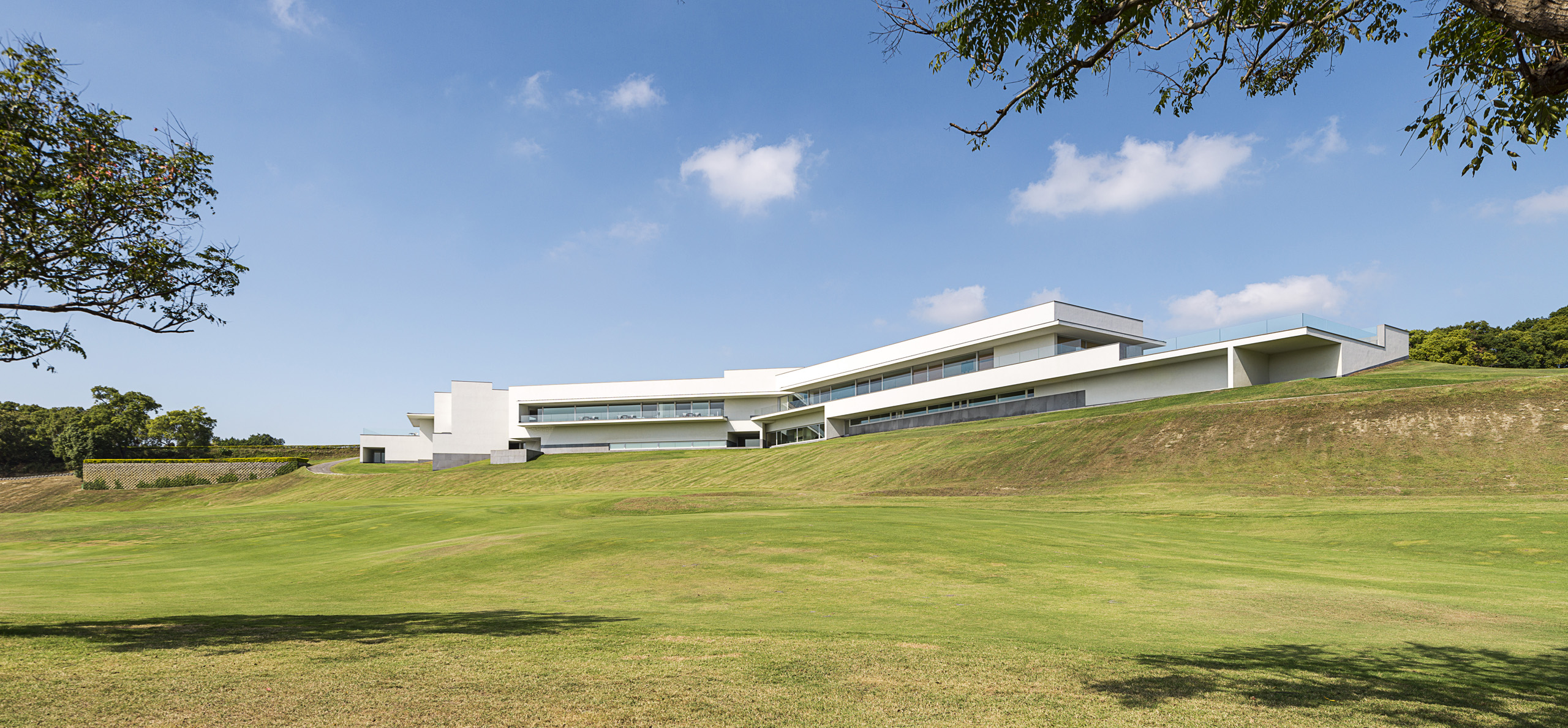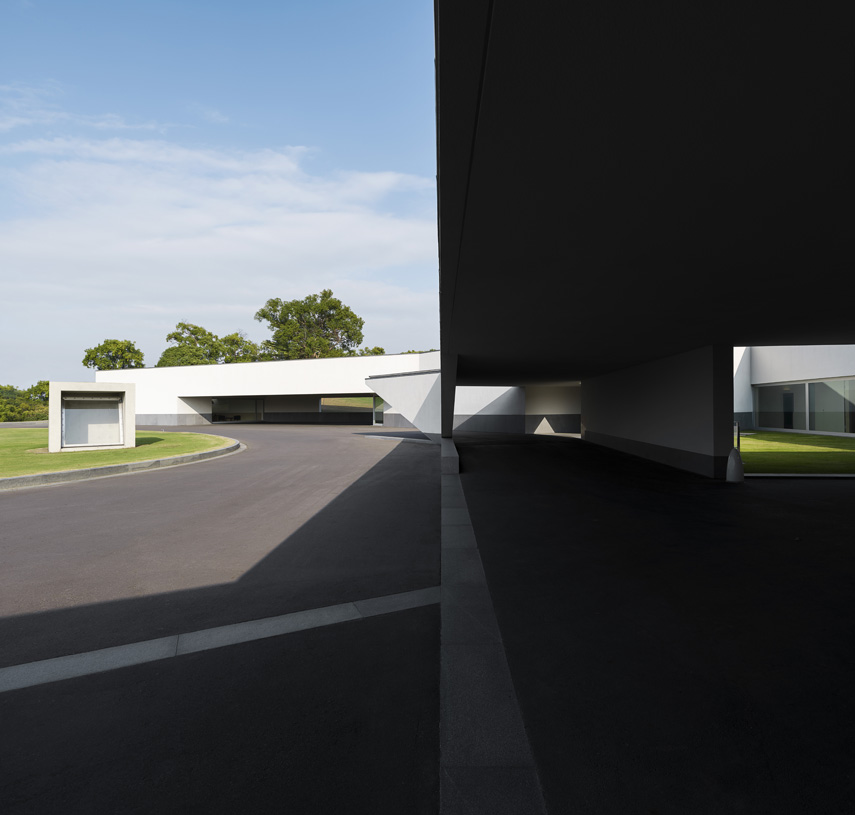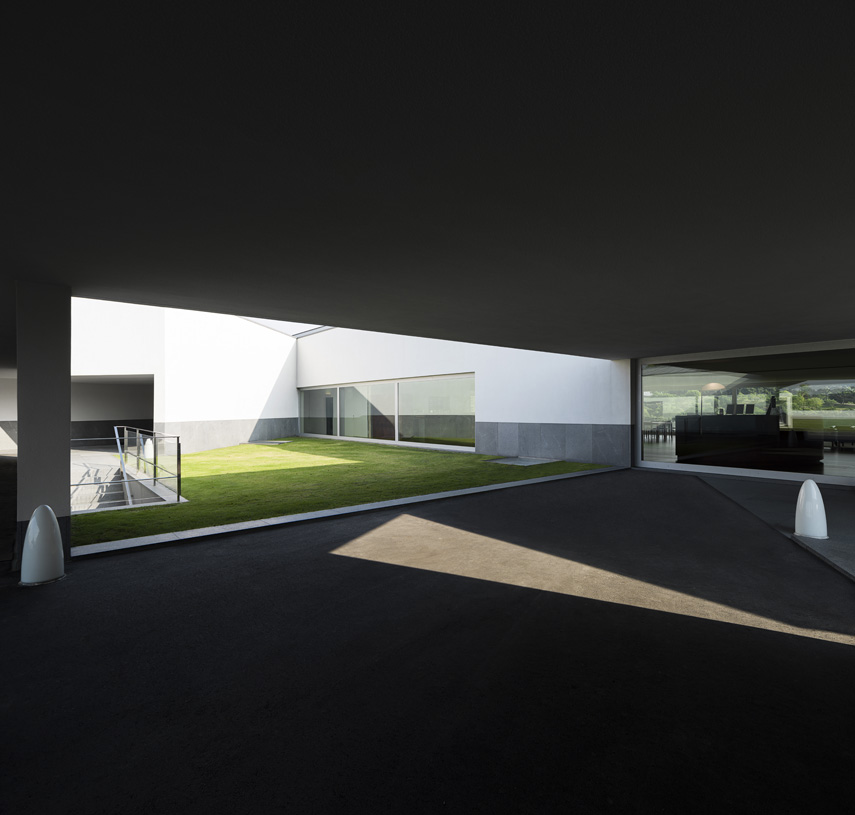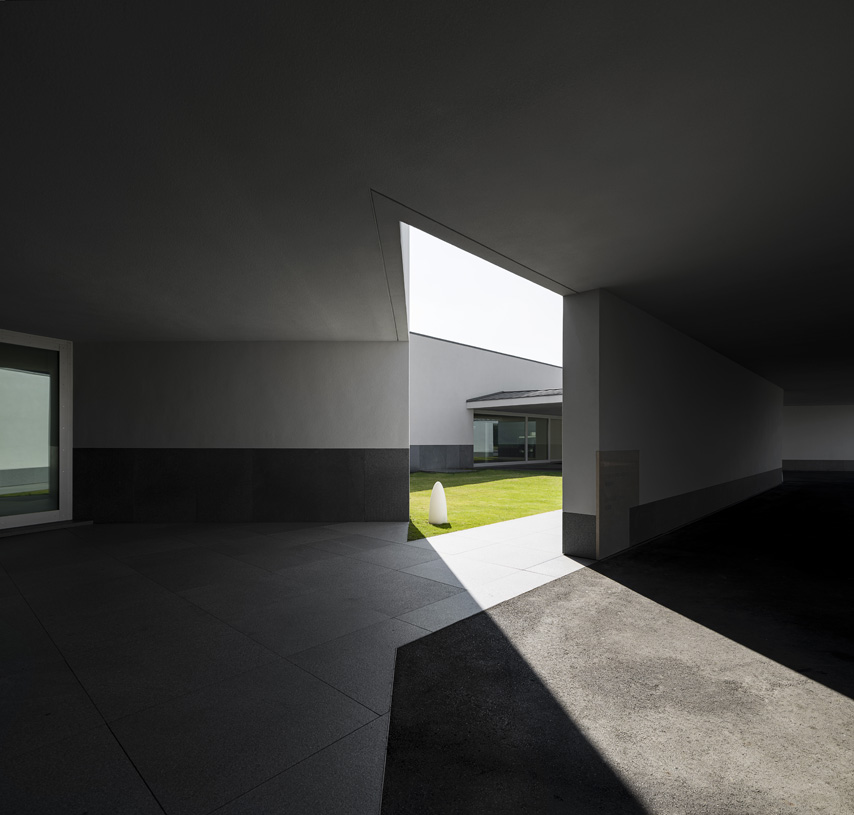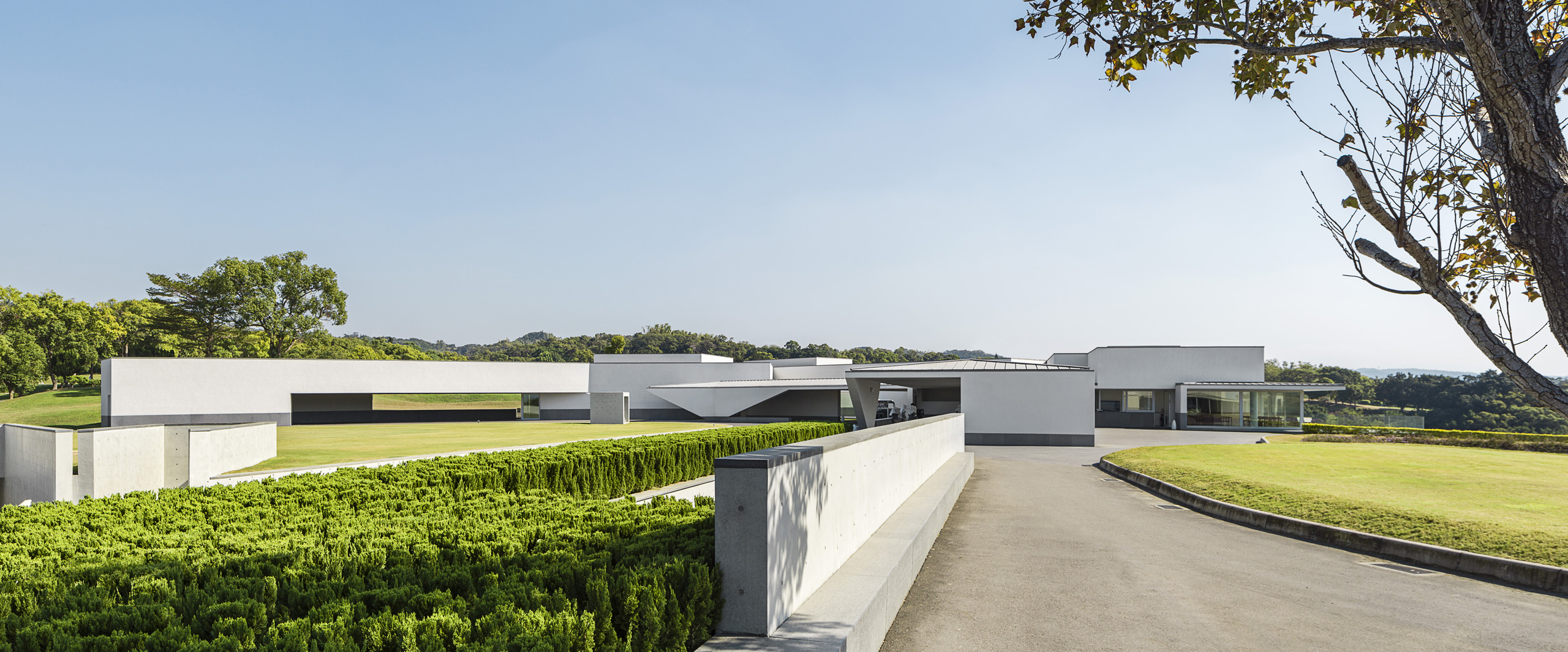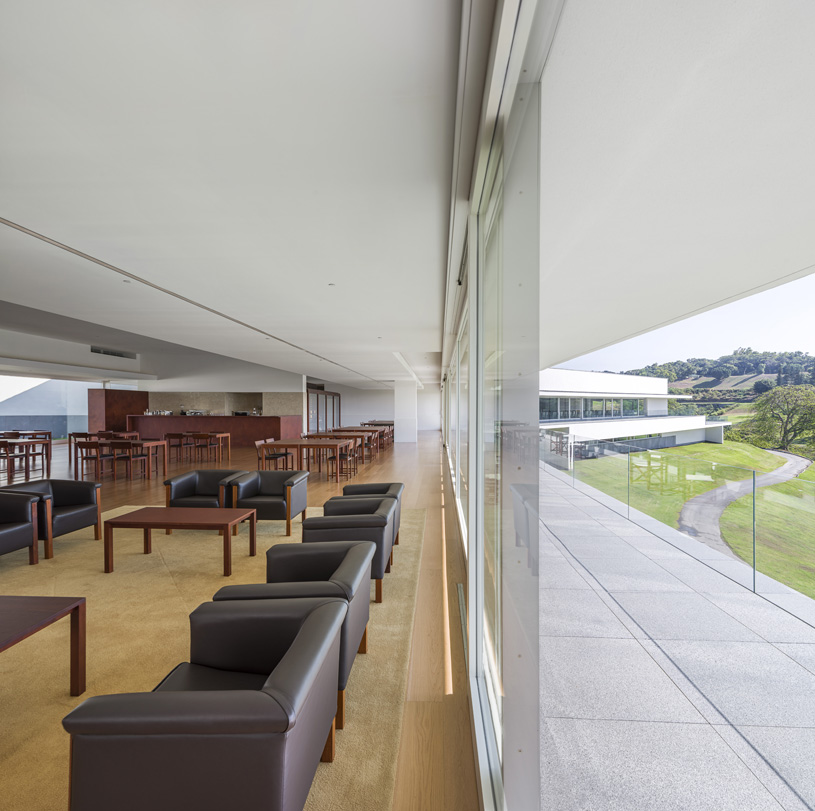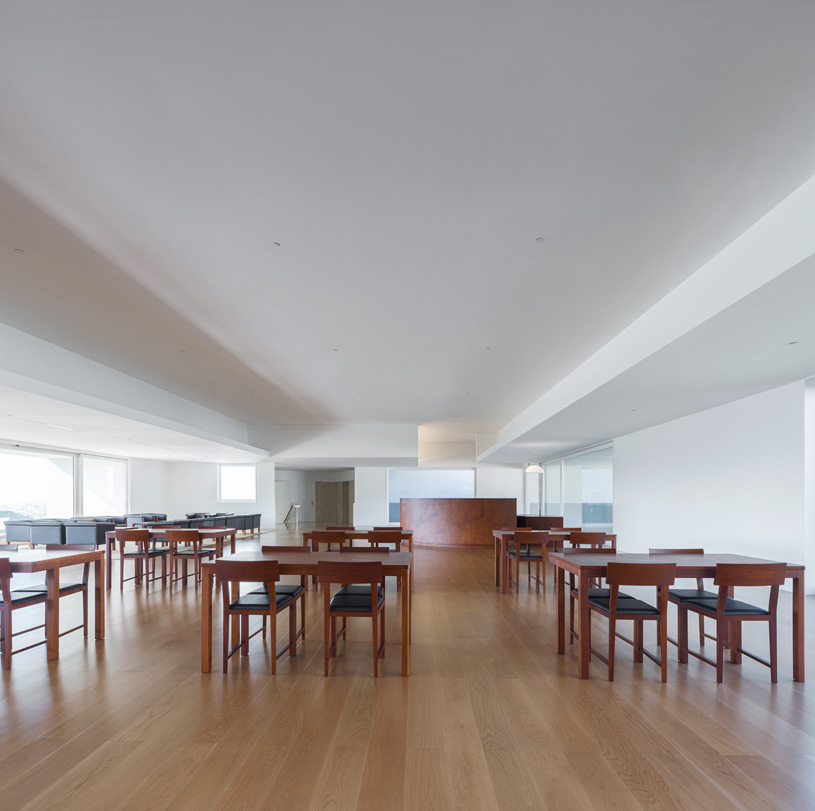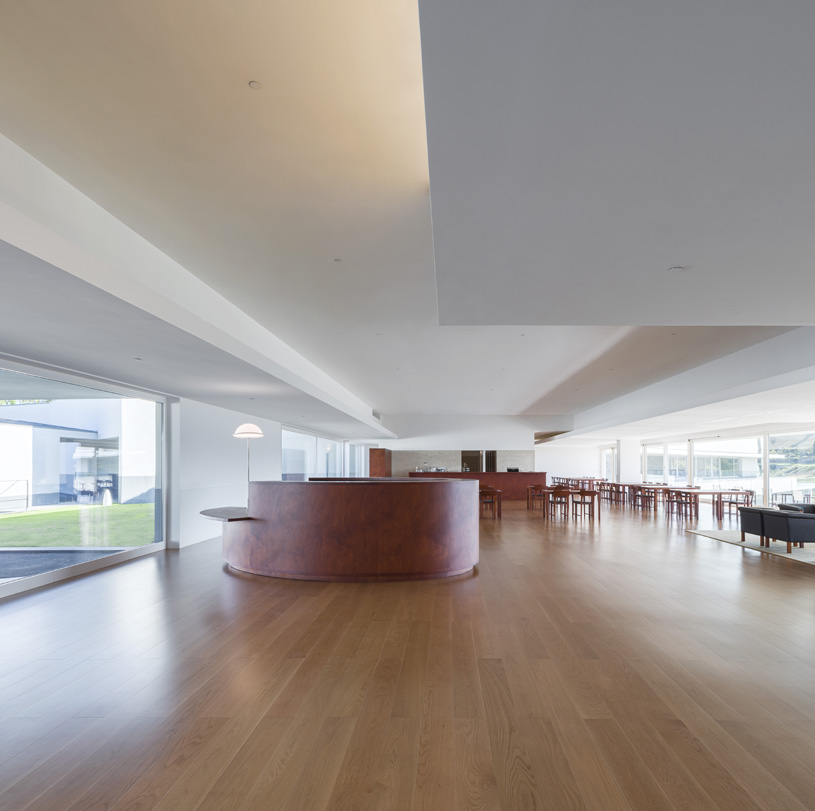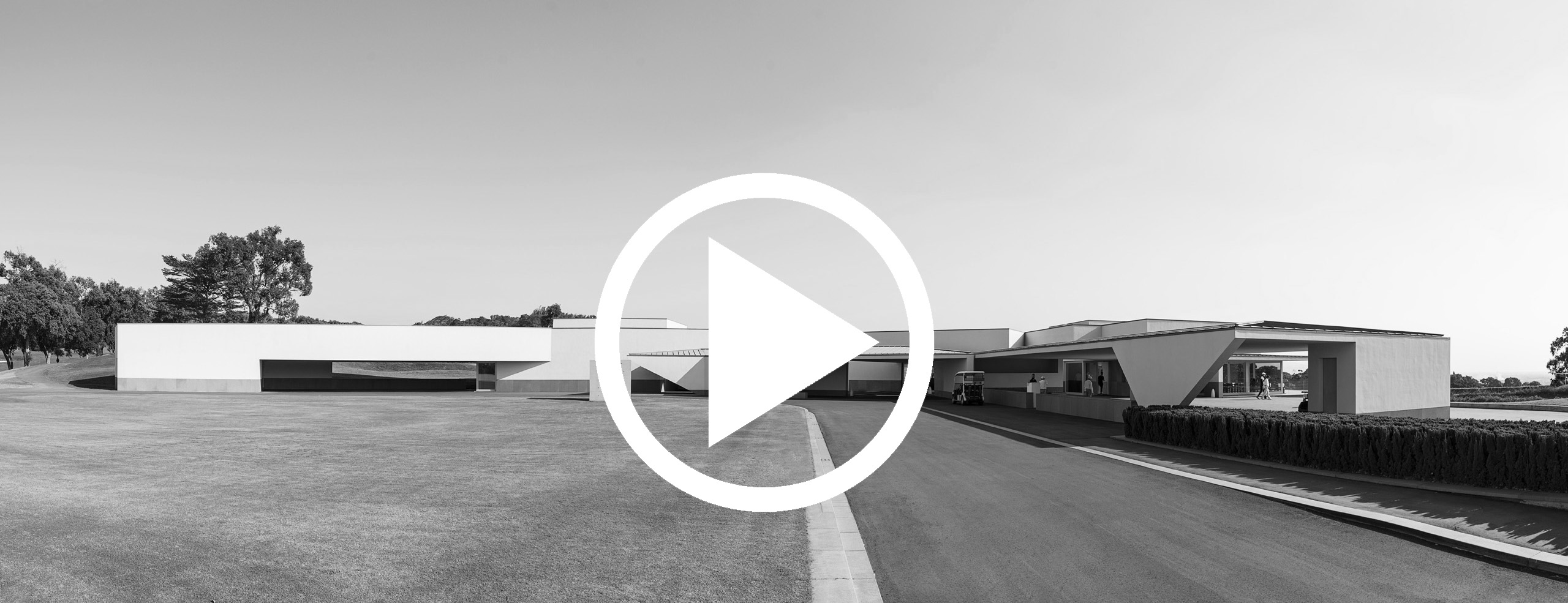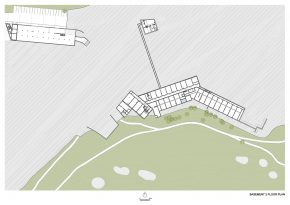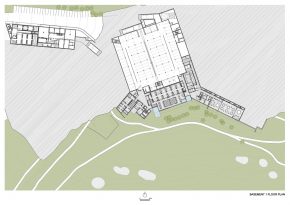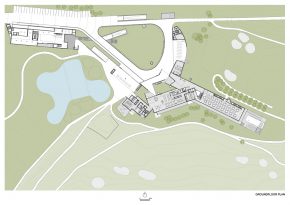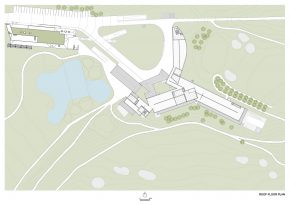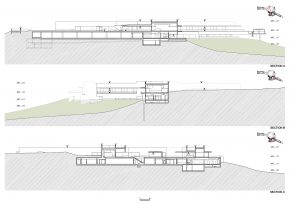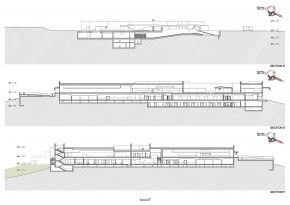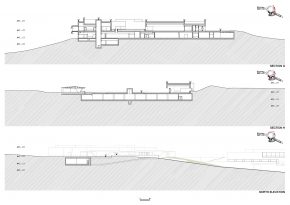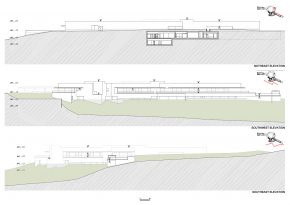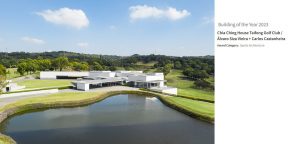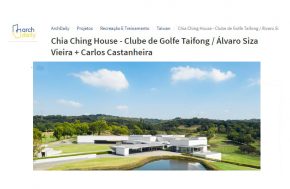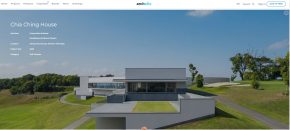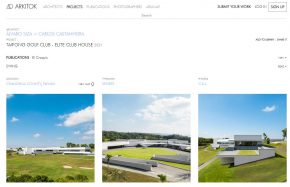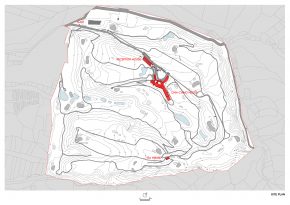
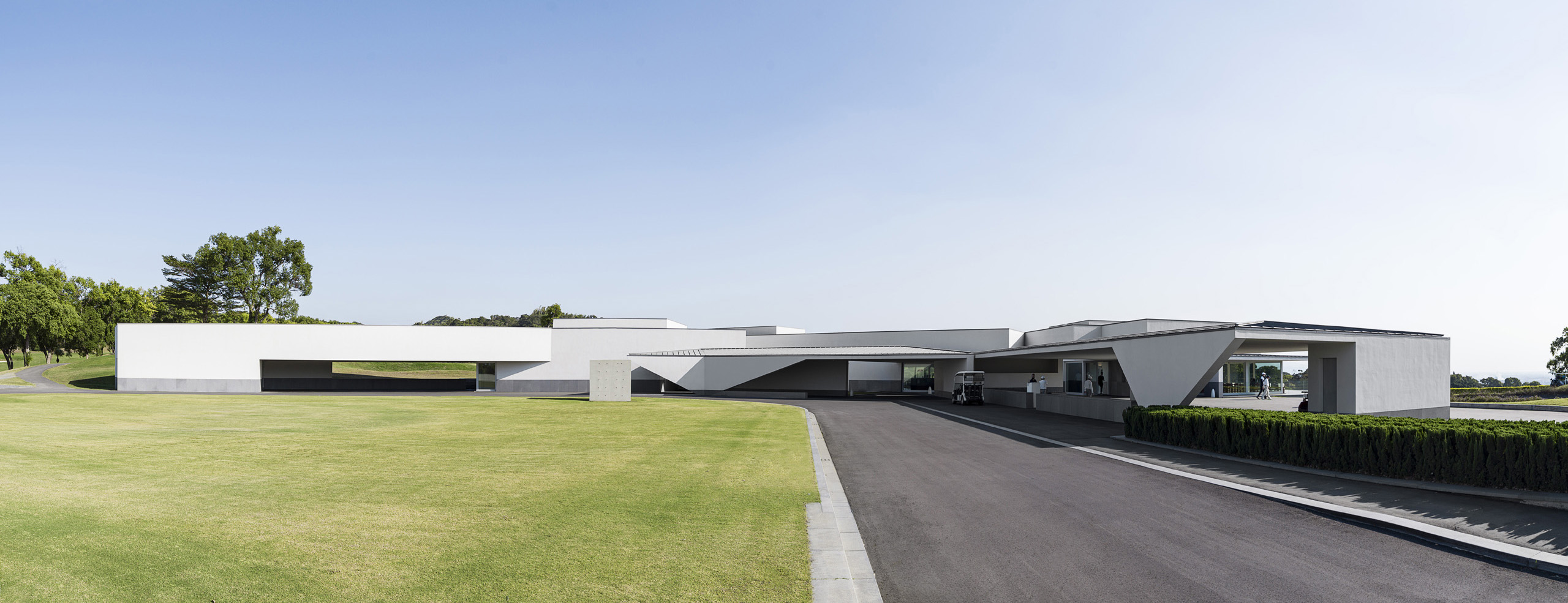
Chia Ching House . Taifong Golf Club
YEAR
2015 - 2020LOCATION
Taiwan, Chang Hua CountyTYPE
SportsDESCRIPTION
SWING
The principal movement in the Game of Golf, a mix of power and elegance, and perfect balance.
Expressing the entire process of design and construction of a Building is a common problem.
There is something else, beyond the simple technical gesture or response to a brief, be that brief more or less complex.
A Project cannot be measured by the first move, even though it is the fundamental move. It has to carry a great deal of energy, a great elegance, even if doing so discretely.
An “a posteriori” analysis allows us to discern just how important that first move is, or the attitude, or concept, or the something which we don’t find easy to explain.
The Chia Ching House building forms part of a group of projects for the replanning of Taifong Golf Course, in Chang-Hua County, Taichung , Taiwan.
At the outset, the brief was merely for the design of a new Club House.
For logistical and strategic reasons, we first developed the project for the small building, the Siza House, which served as the Club House during the construction of the Chia Ching House.
Over time other projects were added in – the Tea House and the Gate House – as support for functions such as welcoming the players and for playing golf, and also other activities.
Their construction will follow.
On the Siza House we trained and then we designed the Chia Ching House.
More complex in size and functions, this new project had to become part of an overall plan, but which would retain its own identity and image.
But the Golf Course was already there and though some adjustments to its layout were possible, the construction of the building had to be planned with the Golf Course in continuous use, all the while ensuring harmony, comfort and safety for everyone.
A well-considered and very rigorous design.
As a result of its multiple functions and their interconnections and hierarchies, the internal layout of the building was complex.
A great deal of communication was necessary between the Client, the Club’s Management and the Designers.
Although the practice of Architecture may begin as something individualistic, it is above all a Team Exercise, with the other Architects, Engineers and Builders who are involved in this process. From inception to completion.
For us – as architects – it was a long and fruitful process, where we were allowed to design and build – to date – two individual projects, with requirements and programs that were completely new for us.
The practice of Architecture, or the act of designing Architecture, needs to be carried out by creative people who cannot and must not be specialists.
However, they need to have the openness – as with any other commission – to hear what the Client wants, to study the local Architecture, its traditions and characteristics. To maintain a critical objectivity and above all a strong conviction in the process of design, so that this can be relied upon throughout the entirety of the process. Flexible and adaptable to any new demand that might arise from something or someone outside the process, or even to a change that might be felt necessary, or even fundamental.
Volumetrically, the Chia Ching House greets us with open arms, setting out the entrance for each member, guest or visitor.
The long volume is fragmented into other forms and different geometries, complementary to one another both in size and in function to the activities that will happen in each of them.
Although playing golf is intended to be the predominant function, there are lots of other associated activities, which complement it. There will also be other activities of a cultural or social character that can and will take place in this multi-functional building.
Internally, the variety of spaces is a result of the variety and characteristics of each function and its interconnections.
In Architecture, function and space correspond very directly to one another and shortcomings in this will lead to disfunction, discomfort and almost always a huge loss of spatial and therefore architectural quality.
The multi-functionality sought in the Chia Ching House led to the carrying out of several spatial studies to address the relationship between these spaces, so that some contradictory requirements could be and were overcome.
However, there will always be in this compromise, some contradiction or even disfunction, a sizeable challenge, that we – the architects – hope will be overcome through the richness of the space, light and comfort.
The building is big.
We don’t have a notion of its size on account of its fragmentation and because it spreads itself along the bank that overlooks the course. We never get to be aware of the whole volume.
The volume moves and forces us to move.
It sways. Sometimes slowly, sometimes with more energy. It makes us sway around it.
Moving around inside, the sense of the building’s size is also lessened by its layout which is broken into different functions and by the circulation between these.
Inside, the different materials and light create different environments, which allow visitors to enjoy the lush landscape of the Course, in a controlled and well-defined way.
The light mustn’t be excessive and so it has to be controlled.
Architecture is the control of volume, space, voids and above all the shadows and light which generate it.
The elements needed to create well-being and comfort are all present.
We added furniture and other pieces which, if excessive could unsettle the space created.
Sometimes there is a huge fear of emptiness and a huge tendency to fill spaces with large quantities of furniture and other things, which in no way bring us comfort.
Quite the opposite happens, they generate an enormous racket, causing discomfort and above all vulgarity and ugliness.
The same is true in relation to ceilings and the quantity of unnecessary artificial lighting, where lighting schemes are confused with what is comfort and above all beauty.
In this building – with enormous support from the clients – it was possible to overcome these common tendencies and achieve a balance where, volume, space, material quality and light come together to make architecture.
As architects, we are first of all functionalists.
It is from the demands of function – or functions – that the proposals stem and develop.
Obviously without casting aside the place, our surroundings and the time and circumstances that we live in.
Form follows function and for that reason it orders itself, acquiring richness and value.
Function requires light, shadow, ventilation, security and so often other elements which when carefully resolved can bring richness rather than reduction.
But it is a lot of work to ensure that everything is there, yet where only the essential is seen or felt.
As we move through the building, we sense diversity, relationships and moreover a great coherence, of course nothing was left to chance.
Materials were chosen taking into account function, but also the hierarchy of each space.
Sometimes, the choice of materials is a sequence – or a consequence – of the spaces and then it isn’t us choosing them.
It is the space that makes demands.
Sometimes it isn’t easy to explain how spaces make their own demands and how they don’t depend on us.
The Building – or Project – almost becomes autonomous and starts to make demands.
Contradiction would negate its coherence and we must fight to maintain it.
As in most of our work, we were given the option to study and design furniture along with other pieces.
There was a shared will and desire to have a single high-quality piece.
The process of designing the Buildings for Taifong Golf Course was a long journey, but one where enthusiasm and the will to achieve something good and of high quality was greater than any mishap along the way.
Now that the process is complete – or almost so, as we still have the Tea House and the Gate House to build – I already miss the trips, the meetings and the site visits, so often in humid heat, where – incomprehensibly – there are those who insist on playing a round of Golf and then enjoying the company of friends.
To be an architect is to do good.
Good that will provide pleasure to those who live in what we designed and have helped to construct.
The Chia Ching House building is now complete and fully functioning.
I haven’t visited it since its inauguration. I am sorry.
I ask myself if it could have been better?
I don’t think so!
Everything is a consequence of an innumerable number of factors that we – architects – have to co-ordinate, negotiate and – sometimes even – fight for.
To be an Architect is a profession that is honoured by everything that we give to our Clients, but also to their friends and the many others who will live, feel and absorb our work, something that is possible only through the participation of so many essential, often anonymous elements in the process of conception and construction of any building.
To be an Architect is to build things, Buildings. Which last.
To all of those who participated in this process, our sincere thank you.
Architecture is not a one man show.
Carlos Castanheira
DRAWINGS
MODELS
CREDITS
Architects:
Álvaro Siza
with
Carlos Castanheira
Office in Portugal:
CC&CB – Architects, Lda.
Project Coordinator:
Elisabete Queirós
Collaborators:
Catarina Araújo
Erika Musci
Filipe Mota
Joana Soeiro
João Alves
Jorge Pinheiro
Mariana Mendes
Nuno Campos
Nuno Rodrigues
Pedro Afonso
Rita Saturnino
Sara Pinto
Sofia Conceição
3D Visualisation:
Germano Vieira
Creative Integration Consultant:
Xue Xue Institute, Xue Xue Foundation
Office in Taiwan:
Studio Base Architects, Fielddirektor
Project Coordinator:
Ivan Chiashun Liao
Principal in Charge:
Edward Yoshin Yeh
Project Management & Construction Supervision:
Studio Base Architects, Fielddirektor
Consultants:
Unolai Design & Associates (Light)
Filipe Andrade Santos (Electroacustic)
Teresa Grácio (Scenography)
LogAcústica – António Meireles (Acoustic)
Structure:
Envision Engineering Consultant
Electricity:
Majestic Engineer Consultants.INC
Construction Company:
JuGang Construction. Co / Skyhawk Enterprise Co, LTD.
Total Building Area:
11 886 m2
Photography:
©C.K.L.
AWARDS
2021 – Jury Prize of the Taiwan Architecture Award
FEATURED ON
